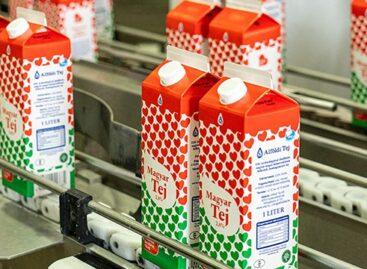Early detection is key to controlling grapevine golden yellow disease
The National Food Chain Safety Authority (Nébih) draws the attention of grape growers to the importance of early detection of grapevine golden yellow disease. The pathogen can cause serious plant health and economic damage, posing a serious threat to domestic grape production. For effective control, it is important that farmers regularly inspect their plantations and, in case of suspicion, immediately notify the plant health inspector of the regionally competent county government office and Nébih.

(Photo: Pixabay)
Every grape grower must be familiar with the characteristics of grapevine golden yellow disease, as this serious disease endangers the entire domestic grape production. The quarantine pathogen, which is already present in 15 Hungarian wine regions, causes serious plant health and therefore serious economic damage in grapes.
The phytoplasma disease is not capable of spreading independently, the infection is spread by an insect vector, primarily the American grapevine cicada (Scaphoideus titanus)
The presence of the pathogen can only be confirmed beyond doubt by laboratory testing, but the most characteristic symptoms can be observed on plantations from the summer months onwards. Signs of infection include the spooning of leaves towards the back, triangular drift, and yellowing and dying leaves in spots in white wine grape varieties. In the case of blue grape varieties, redness occurs between the leaf veins, while the main veins remain green. The leaves harden like paper and then fall off. The shoots do not become woody, the canes thin, become rubbery, and often take on a drooping shape reminiscent of a “sad willow”. In addition, the internodes shorten, the development of the clusters is disturbed: the berries become dry, have a bad taste, and have a low sugar but high acid content.
A particularly dangerous aspect of the disease is that grape varieties of American origin are often asymptomatic, so the pathogen can remain hidden in the plantation
For this reason, not only the recognition of symptoms, but also the protection against the American grape cicada, which is responsible for spreading the disease, is of paramount importance. In early August, adult individuals of the American grape cicada can be present in large numbers in vineyards, especially on the upper leaves of the shoots. The cicada needs 7-8 days of continuous feeding to develop its infectivity, but even the L3 larval stage is able to absorb the phytoplasma. The adult insect is 5-6 mm long, light brown-orange in color, the top of the head is slightly pointed and a black stripe pattern is visible on its front edge. It is recommended to place yellow sticky notes to observe the insects. It is important to know that the cicada can be easily confused with other species, therefore, laboratory testing is recommended for accurate identification.
The pest monitoring system of Nébih helps in the appropriate timing of protection
The interactive map can be used to track the spread of the American grape cicada. In the system, plant protection supervisors of government agencies record the location of the detection as well as the developmental stage of the grape cicada. The responsibility of grape growers is crucial: if we do not act in time, the disease can cause irreversible damage to the entire domestic crop production.
Nébih
Related news
Authorities seize expired gyro meat in Budapest: inspections tighten in the street food sector
🎧 Hallgasd a cikket: Lejátszás Szünet Folytatás Leállítás Nyelv: Auto…
Read more >Safe holiday preparations: food safety tips for your Christmas menu
🎧 Hallgasd a cikket: Lejátszás Szünet Folytatás Leállítás Nyelv: Auto…
Read more >AM: Government helps farmers with a loan moratorium
🎧 Hallgasd a cikket: Lejátszás Szünet Folytatás Leállítás Nyelv: Auto…
Read more >Related news
Crowds return to stores: margin cap and year-end preparations drive retail traffic
🎧 Hallgasd a cikket: Lejátszás Szünet Folytatás Leállítás Nyelv: Auto…
Read more >The kings of the New Year’s Eve list: hot dogs and champagne in abundance
🎧 Hallgasd a cikket: Lejátszás Szünet Folytatás Leállítás Nyelv: Auto…
Read more >The Alföldi Tej case is drifting towards an uncertain outcome
🎧 Hallgasd a cikket: Lejátszás Szünet Folytatás Leállítás Nyelv: Auto…
Read more >






